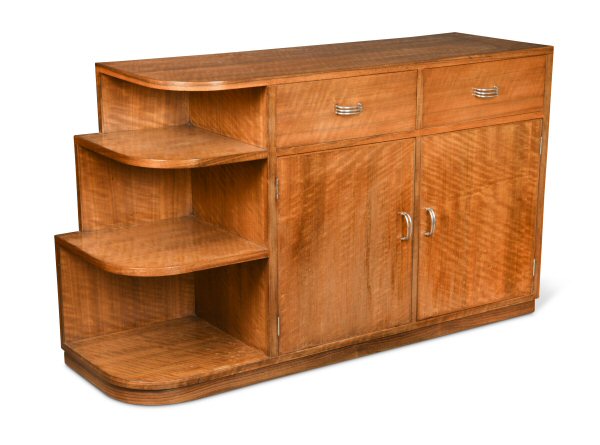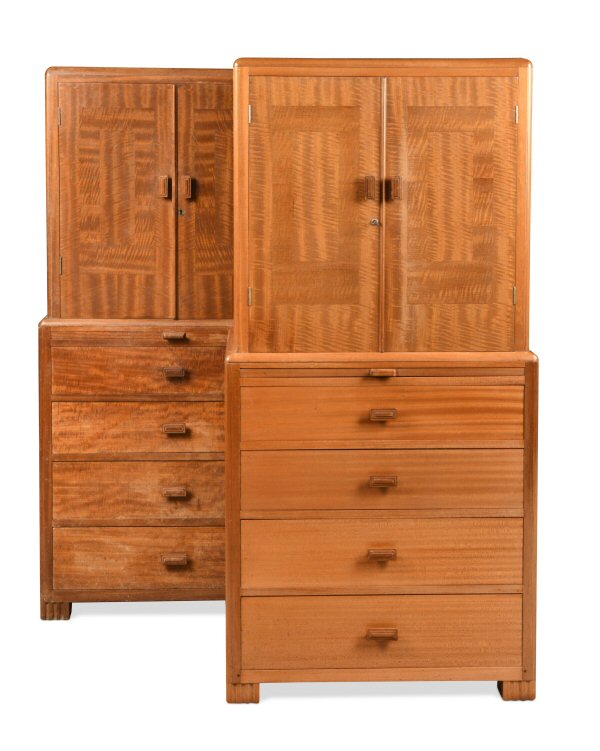Whilst Betty Joel was only active in furniture-making between 1927 and 1938, she left behind an enormous design legacy which would go on to inspire many throughout the coming decades.
Born Mary Stewart Lockhart in Hong Kong in 1896, the daughter of British Colonial Officer James Stewart Lockhart and his wife Edith Rider, she spent her childhood and early twenties in China. These early years in the Far East became pivotal in inspiring and influencing her style and taste on returning to England with her husband David Joel, a naval officer who she met in Ceylon.
On return to Portsmouth following the First World War, Betty is quoted to have said ‘I personally began to design furniture because I despaired of trying to adapt old furniture to the needs of my own entirely modern house’ and from there she went on, without any formal training, to create some of the most sought-after pieces in 1930s design. Her work was featured in The Studio, the illustrated decorative arts magazine and today her work can be seen in both the Victoria & Albert and the Geffrye Museum.

Betty Joel, a Token Works walnut side cabinet, 1935, estimate £400 - £600 in Cheffins Art & Design Sale on 27th May
Her business, Betty Joel Ltd, which she ran with her husband David, grew at a rapid pace to include shops in Sloane Street and later in Knightsbridge. Her early designs were hugely popular, created with local artisans and typically using teak or oak in their manufacture. These became known as the ‘token furniture’ and have gone on to become a symbol of Betty’s modernist yet restrained aesthetics. A woman on a mission, such was her drive that her reputation as a serious designer was quickly earnt and her popularity ensured that commissions came from far and wide including from the likes of Sir Winston Churchill, the Savoy, St James’s Palace Hotel and Lord and Lady Mountbatten. Interestingly, works by Joel were signed both by her and also the man who physically made the piece, as she believed that their contribution to the work was just as important as her own. Most of the early manufacturers of Betty Joel’s pieces were ship fitters, who were trying to find work after the war. At her height, it is said she employed around 80 of them.
Well ahead of her time, Betty Joel was also a genius at marketing her furniture. Her factory in Kingston became a one-stop-shop for many, as it housed a gift shop, sold fabrics and numerous other interior design pieces. Her target market was mainly the UK’s middle-class housewives, and she created her designs to appeal perfectly, with no beading to ensure no trapped dust and rounded edges to avoid bruised shins. Her career ended when she stopped designing in 1938 following the breakdown of her marriage.
Betty Joel’s designs have continued to be popular, and whilst they can still be picked up at relatively affordable prices at auction, their values are certainly rising, with some of the best examples now selling for up to around £10,000 within the trade.

Betty Joel, a pair of Token Works mahogany drinks cabinets, 1931, estimate £800 - £1200, available at Cheffins Art & Design Sale on 27th May
The Art & Design Sale at Cheffins on the 27th May offers a series of items by Betty Joel, including a number of pieces from her ‘Token Works’ heyday. On offer is a walnut sideboard, a triple wardrobe, two different chests of drawers, a mirror, two mahogany drinks cabinets and a dining table, all with estimates ranging from £100 - £1,200. Typical of Betty Joel, these pieces are modernist in style and form, created with quality materials including walnut and mahogany, ensuring that they can be at home in a wide range of interior design schemes, from the maximalist to the more minimal and contemporary.
The full range of Betty Joel furniture can be found in the Art & Design catalogue .